
Remembering ‘The Coach’: The Late D. Wayne Lukas Touched Many Lives in Horse Racing and Beyond

To discuss several of the important issues facing the sport as a new year approaches, BloodHorse has assembled a panel of about 30 industry participants to participate in the 2023 Year-End Survey where they can provide their thoughts on six key topics.
The series continues today with a question on marketing the sport and attracting new, younger fans. Following this panel, the series will conclude with a question about wagering. (Read the first four installments on racing surfaces, foal crop size, adjusting the racing calendar, and HISA.)
While BloodHorse realizes there are countless other voices that could have been included, the hope is that these answers will spark meaningful discussion within the industry. Anyone who would like to offer their opinion is encouraged to submit them in writing to editorial@bloodhorse.com for inclusion in our Letters to the Editor. Longer pieces can be considered for an Our Voices column.
TODAY’S QUESTION: Is racing being marketed properly and should more money be invested in such efforts? What can the sport do to attract more fans?
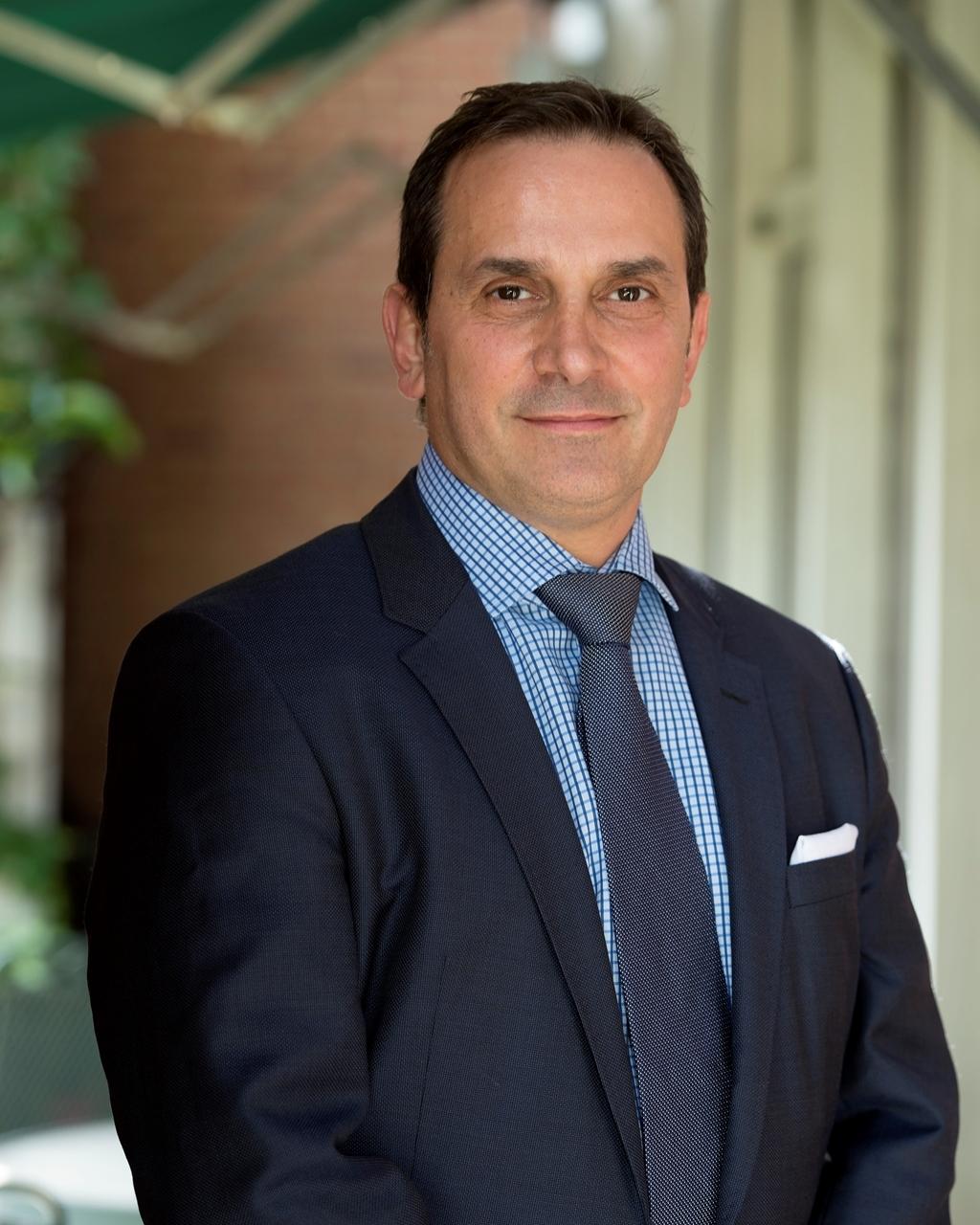
Tony Allevato, president, NYRA Bets/chief revenue officer New York Racing Association: What we are doing is marketing to our audience, people who are interested in horse racing or can become interested in it. I think there is a big opportunity, with sports betting on the rise in the United States, to tap into a new group of potential fans. But this illusion out there that we are doing nothing is wrong. Some of the most creative people work for smaller tracks – and I have worked with the NFL and other professional sports. Horse racing has a lot of very creative people. We just don’t have the ammunition to market like the major professional sports can. However, we have a big opportunity with television. We have FanDuel TV, which is basically a 24-hour network dedicated to horse racing, and FOX Sports dedicates 1,200 hours a year to horse racing. We should be looking at that and saying, “What can we do to educate and entertain people so that they want to come to the races and make it a go-to experience?” So, I think the industry does a good job with marketing. We’re all embracing interesting new ways to promote the sport effectively using television, digital, and social media.
Shannon Arvin, president and CEO, Keeneland: Keeneland invests in outreach and development initiatives aimed at growing racing’s fan base and creating a more diverse community of participants. We are fortunate at Keeneland to enjoy strong support from our local community and fans. We do not take this for granted, and will continue with creative marketing strategies on a number of fronts, including a robust social media and digital presence. Our year-round fan education and engagement efforts target all age ranges. Among the most popular are our behind-the-scenes guided walking tours and our Sunrise Trackside programs, where families and visitors watch morning works, enjoy activities for the kids, and pet a horse. If we get our fans close to the horse, the rest takes care of itself. We design our programs to provide fun experiences and opportunities for kids to learn about Keeneland and the horse industry from childhood to young adult. We have a Collegiate Opportunities Program, and we work with mentorship organizations like Amplify and Ed Brown Society to raise awareness about careers in the horse industry. We also believe it is critical for racing to remain competitive with other sports and entertainment venues. That goal and our mission to perpetuate the very best in Thoroughbred racing have driven Keeneland’s construction of a new paddock building, the first in numerous enhancements to expand viewing and hospitality experiences available to the public at Keeneland. This project is central to our mission as it will allow us to welcome more fans and give them a variety of world-class experiences during our race meets, sales, and beyond..
Dr. Dionne Benson, chief veterinary officer, 1/ST Racing: At 1/ST we recognize that to attract the next generation of fans, integrity, safety, and accountability goes together with the guest entertainment experience. For me, that begins with horse and rider safety – not only on “big” days or at higher-profile tracks, but every track, every day. We know that younger fans expect more and that the social license for Thoroughbred racing requires an ingrained commitment to safety. Attending the races and feeling the energy of the horses is truly a unique experience. When you blend that feeling with world-class entertainment and hospitality, like the Preakness Stakes, Pegasus World Cup Invitational, or Santa Anita Derby, you have a combination that is unmatched by any other experience – and our team does it best! Recently, I had the privilege of attending the Japan Cup at Tokyo Racecourse. What struck me the most while there were the number of younger fans. While U.S. horse racing certainly has more competition from other professional sports, I believe that by working together as an industry we can find a way to reach the younger audience and convert them to horse racing fans.
Louis Cella, president, Oaklawn Park: This question suggests our industry should use a national, consistent message for all jurisdictions, which I do not agree with. The Jockey Club uses a national message of integrity and focuses on the national American Stud Book and is a major influence in industry programs like Equibase. HISA focuses on nationwide issues of safety and consistency. The NTRA focuses on equine welfare and integrity while trying to increase the popularity of our sport. These entities should focus on national issues that impact all of us equally. However, how Arkansas markets to its fans is completely different than how NYRA markets to its fans, or California or Florida to its fans. What might resonate in Arkansas might not resonate in Kentucky. Our industry learned that lesson with a national advertising campaign which largely was not effective, especially in Arkansas. This issue is uniquely reserved for each jurisdiction. Unfortunately, we all have marketing budgets that are defined and which we must follow.
Dennis Cornick, part owner of Flightline through West Point Thoroughbreds: Marketing in our industry is awful. I don’t know any other way to say it. Having headed up marketing and sales for a $6 billion organization, I am appalled at the industry approach to marketing. Marketing is the branding of an organization, and how it is viewed both internally and externally. The industry does an awful job. Every significant industry decision going forward should have an associated marketing conversation with it. While marketing is done at a local racetrack or organization level, it is not consistent and does not consider the industry as a whole. I strongly believe a national marketing organization should be funded and created to address the problem. This group should work hand in hand with local organizations and racetracks. It should also coordinate with HISA as they appear to have no marketing sensitivity at all. There are many lessons learned and best practices that can be adopted from corporations and sports leagues that have had issues, and worked hard to change perceptions. Marketing is a journey and long-term process. Perception does not change overnight. The issue is that every day we don’t have a coordinated industry approach and focus, the brand gets tarnished more and more.
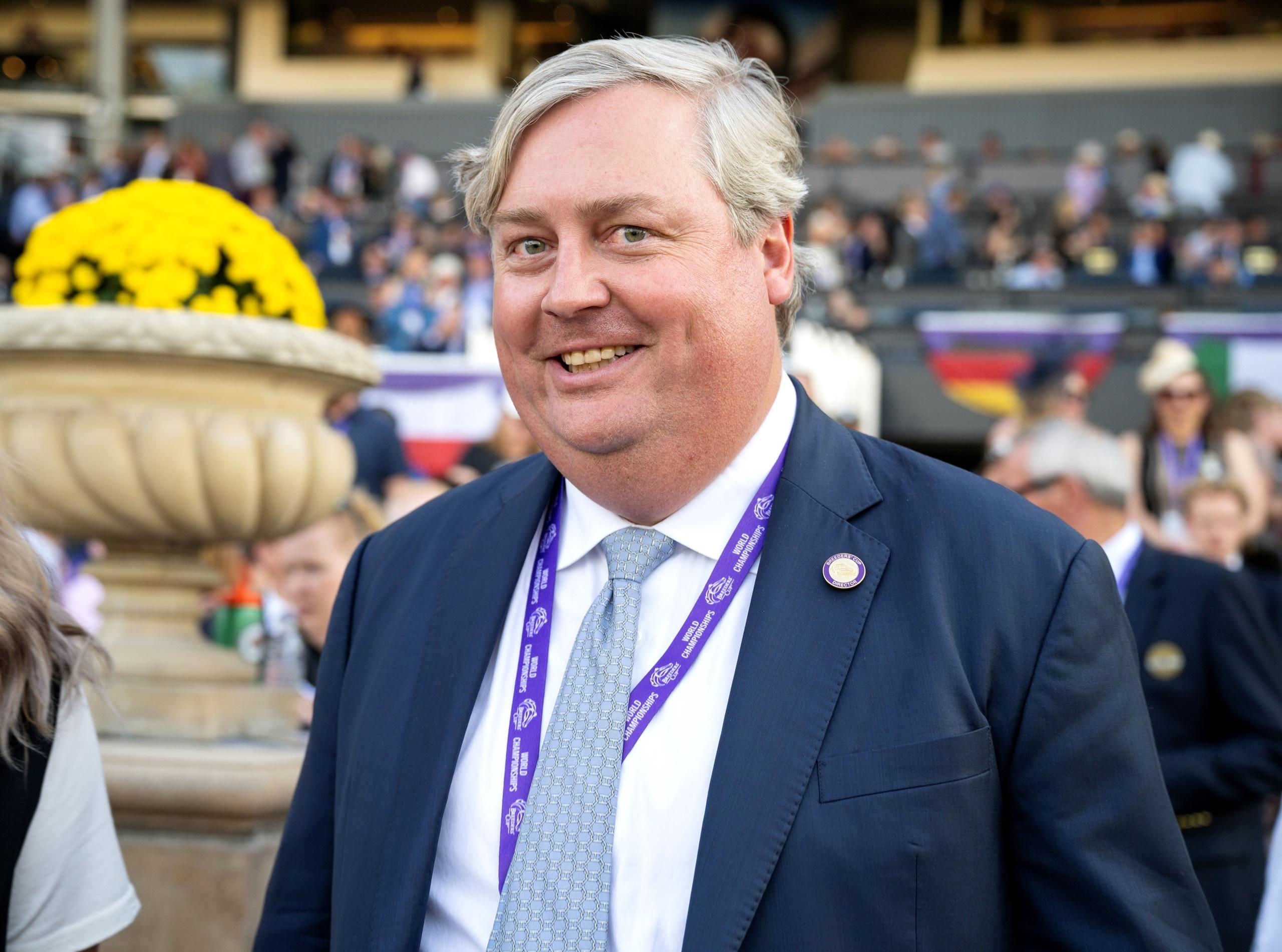
Drew Fleming, president and CEO, Breeders’ Cup: There is no centralized marketing effort for our sport, which in and of itself is a problem. The industry is severely fragmented compared to other sports industries. At the Breeders’ Cup we are investing substantial resources in marketing to help raise awareness not only of our brand, but of the entire sport. The first thing we need to do to attract new fans is to prove that our sport is safe and clean. A sport rich in integrity is going to thrive.
Brad Cox, trainer: We have a hard time promoting horse racing because of the negativity out there about the sport. I grew up in Kentucky and wanted to become a trainer, which was something you could be proud of in that part of the country. You’d tell people you’re a trainer and they would ask about the Kentucky Derby or any good horses in your barn. Now, someone finds out you’re a horse trainer and the first question they ask is about fatalities. There’s a very negative cloud over the horse racing industry and a large part of that comes from media coverage. I’m not saying that’s right or wrong, but that’s the way it is. The bad stuff makes the news. Someone told me the best defense is a good offense and I don’t know if we have an “offense” in horse racing. On a positive note, I think the Breeders’ Cup does a good job of marketing but that’s a weekend of racing. They do a good job as well with their “Win and You’re In” stakes but overall, for day-to-day racing, I feel it’s a struggle to promote the sport in a positive manner.
Dennis Drazin, CEO and chairman, Monmouth Park: Racing should increase its marketing spend and utilize ideas and technology used in other major league sports to enhance our product and attract a new fan base. Sports betting and fixed-odds wagering have the potential to increase our handle and crossover wagering opportunities to capture a younger demographic. It’s up to us to embrace it. The future is everyone has a phone with apps that can lead to customers having a 24/7 opportunity to wager. The trick will be to make our venues destination resorts to get live customers back to the track.
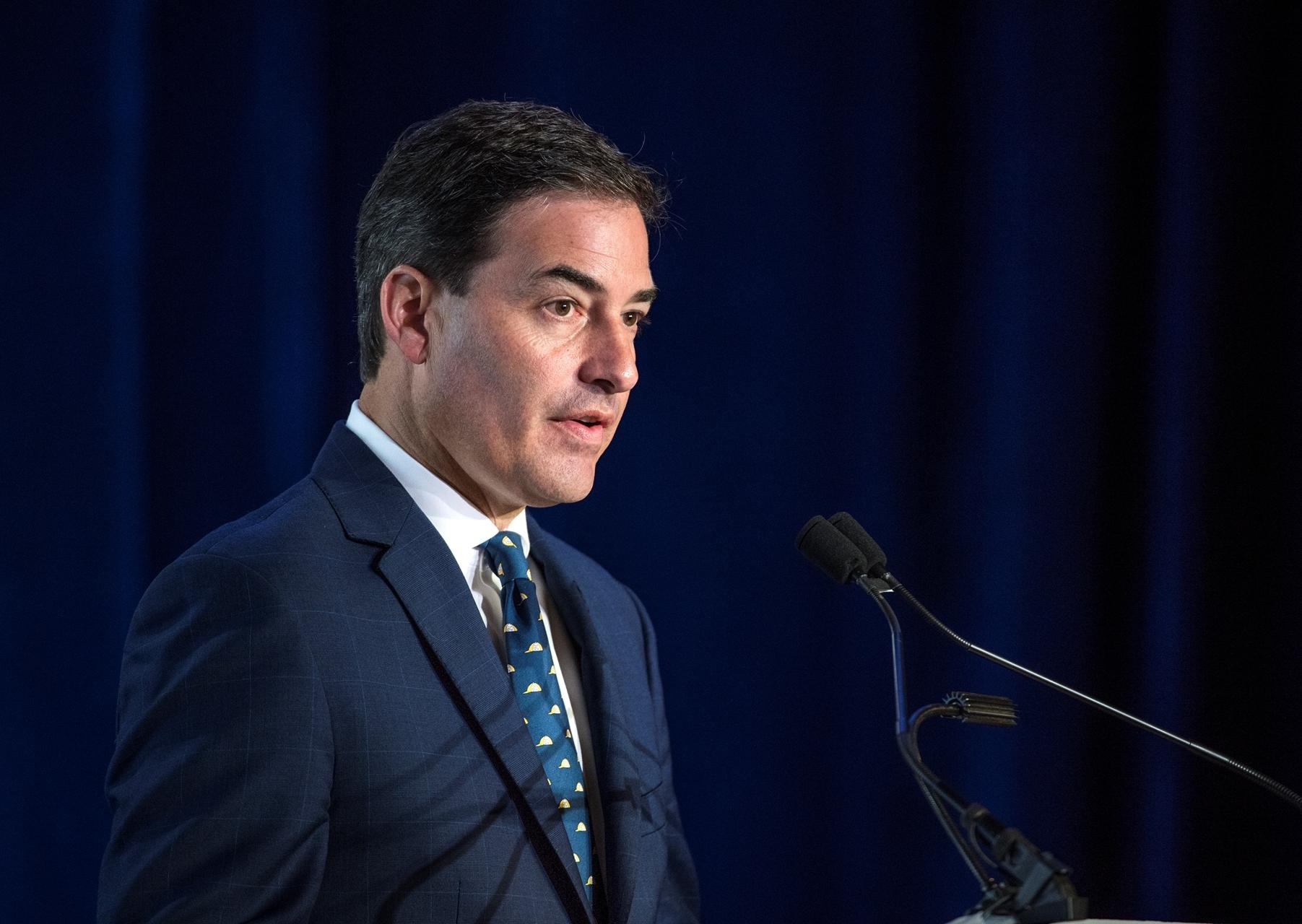
Jim Gagliano, president and COO, The Jockey Club: I think we would all agree that just as Thoroughbred racing needed national oversight of medication rules and track safety, it also needs a national marketing arm. We need to get the best stories out about the sport. America’s Best Racing has been doing that for more than a decade and we welcome the opportunity to collaborate with others in the industry to expand our marketing investments. Furthermore, in an effort to grow more fans, the sport should explore streaming partnerships with Amazon, Apple, and others for both live racing and unscripted reality shows featuring personalities involved in the sport. Those types of shows, if done correctly, can help create an emotional hook for the viewer to become curious enough to watch a race, bet on a race, and attend the races. Last thought on this subject: We need to get away from claiming races and move to a rating system that is more easily understood and, I believe, better protects the investment into a horse and its welfare.
Eric Hamelback, CEO, National Horsemen’s Benevolent and Protective Association: No, racing is not being marketed properly and we need to be focused on how to fund marketing efforts. The NTRA was established years ago to be the marketing arm of the industry. To date, it has failed in that mission. In 2018, I outlined at the National HBPA Conference how the horse racing industry could mirror what the PGA did many years ago in order to promote golf. The concept received positive response but efforts had to be tabled. I look forward to bringing that concept up again. But to whom? I would like to see the promotion of horse racing come from the industry. The NTRA no longer acts as a voice for the entire industry, nor is the organization a league office for racing participants. The funding for marketing needs to be driven by those in the industry and overseen by horsemen and women who understand horse racing. I believe the industry should be encouraged by initiatives such as Amplify Horse Racing and also the industry coming together for ventures such as the Thoroughbred Aftercare Alliance, the Retired Racehorse Project, and the Thoroughbred Industry Employee Awards – which were all driven by horse racing participants with the intent to highlight our sport.
Joe Harper, president and CEO, Del Mar: As an industry we need to allocate more resources to promote the improvements that are being made in equine safety and welfare. The recent NTRA campaign, “Safety Takes The Lead,” is the type of communication we need to do more of. In California we developed the Horse Power Coalition, which uses social and digital media to highlight the positive aspects of our industry, such as equine safety, jobs, and economic impact. Earlier this year a member of California’s Senate told me, “You guys are doing some excellent things, but not enough people know about it.”
Dottie Ingordo-Shirreffs, consultant, Thoroughbred breeding, racing, and management: The presentation of the sport needs to be more positive. The focus should not be about who is not running, but who is. Promote the positive!!! People bond to horses and love them. The horse caretakers adore them. Play to the positive while continuing to clear up and correct the other aspects of the sport requiring more direction. Marketing is essential. We need to create promotions and interest to bring people to the track and live racing. The giveaways have consistently been popular. We need to revitalize this. We all have our caps, t-shirts, tote bags from times past. Another promotional concept: LET’S GO RACING! What other sporting event offers you the opportunity to get paid by winning money for having fun? Keep entrance costs and food prices realistic. Family Day, College Day; they all matter. Doggie Day competition has been a hit. Offer bonus scratch-off tickets when fans come in the door and let the funds apply for future bets. Again, LET’S GO RACING!
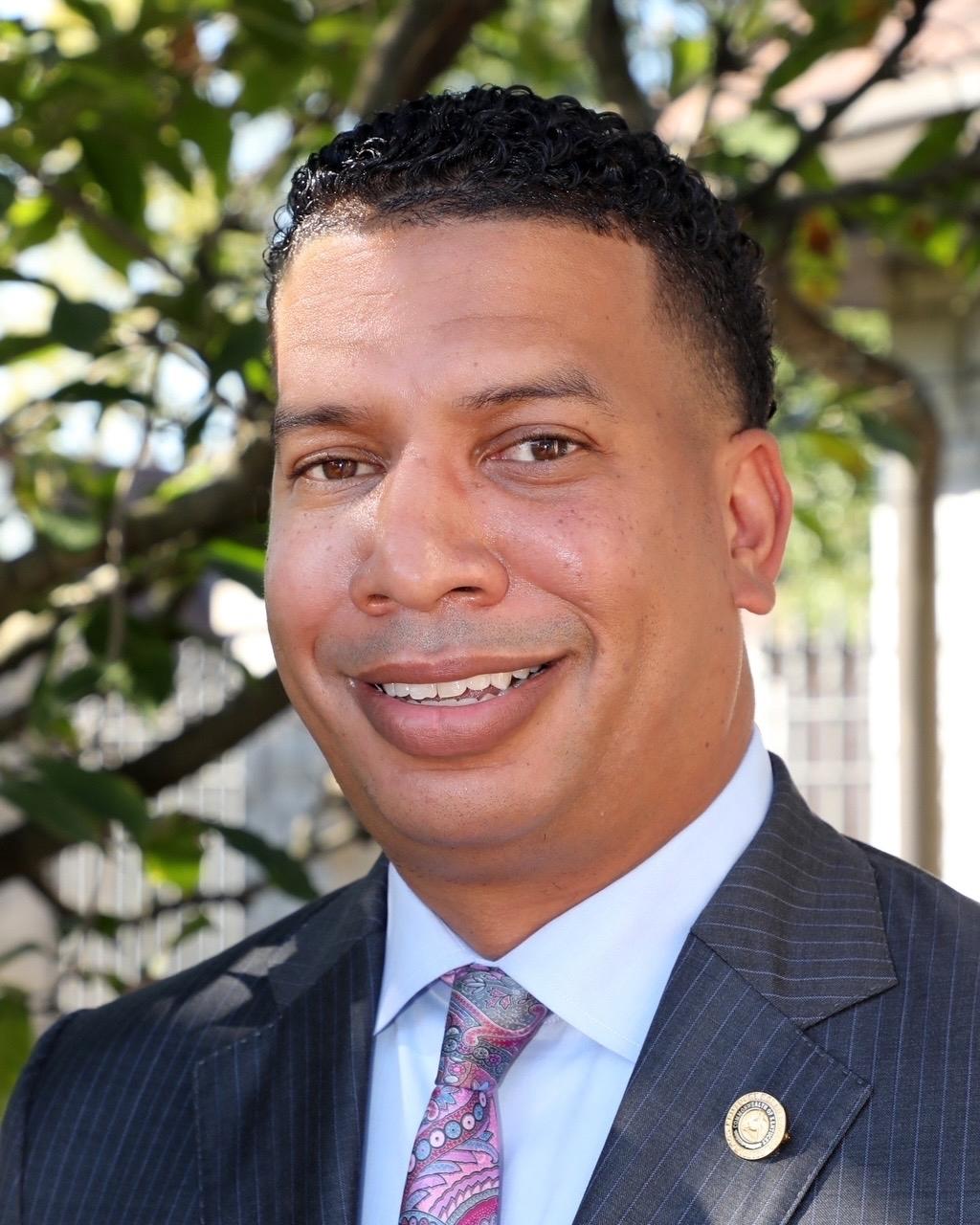
Greg Harbut, owner, bloodstock agent: Racing has not been marketed properly at all. Most certainly, we need to invest more dollars into proper marketing. We must do a much better job of marketing to a younger and more diverse demographic. Here in Kentucky we are blessed to have Keeneland, but outside of that I don’t see a younger base that supports racetracks anywhere else in the country. We also need to market toward a more diverse racing fanbase from an ethnic standpoint. As a whole the industry markets one segment and that’s the white male, 55-70-years-old bracket. That’s worked for a while, but now we are seeing declining foal crops, ownership groups, and wagering across the board. We have to do something different. There’s only so many times you can go to a pond without restocking it. Anywhere outside of racing you see a diverse audience in a healthy sport. Racing needs to get on board and market to a more diverse audience.
Lisa Lazarus, CEO, Horseracing Integrity and Safety Authority: We all want a safe, clean sport that grows and prospers. We want people talking about Cody’s Wish, about the first female trainer to win a Triple Crown race, and about the myriad of other incredible stories that unfold at racetracks across the country year-round. Our job is to ensure a clean, fair sport so negative narratives disappear and all that’s left are the amazing stories about the equine and human athletes who make our sport so special. HISA should never be the story. We’ll leave the marketing to the marketers and continue to work to ensure that the public can truly have faith in the safety and integrity of the sport so that the marketers can be proactive instead of reactive.
Ed Martin, president, Association of Racing Commissioners International: As one who once was responsible for the tourism marketing for the State of New York (i.e. “I Love NY”), I have never thought the marketing of horse racing has ever been as creative, coordinated, or multi-faceted as it needed to be, although it has gotten better in recent years. Somebody clearly needs to be in charge of this and it doesn’t matter who. Everyone needs to feed into that entity and stay consistent with the plan. Other sports seem to be able to do this, but in racing we have different organizations with different agendas that often vie for primacy or relevance. Stepping out of the box will sometimes bring the ire of those tied to the ways of the past. Yet that is what must happen. New fans will not come unless horse racing is fun, exciting, interesting, and rewarding. Everyone wants to have a good time. Most people have a good time when they win money, laugh, help a good cause, attend a party, interact with friends, eat good food, consume beverages, have music, and get to dance. It’s all right there. Even if you lose money, if you had fun doing it, the fun is what you remember. If we continually focus on the negative, we shall never have time for the positive. This should not be complicated.
Dan Metzger, president, Thoroughbred Owners and Breeders Association: Over 25 years ago, the National Thoroughbred Racing Association was founded with broad support across the industry. A significant amount of financial resources were dedicated to the promotion of the sport across the United States, but regrettably, due to several factors, the NTRA discontinued its national marketing. NBC Sports does a tremendous amount of marketing around the Kentucky Derby and to a lesser extent, the Preakness. FOX has a campaign for the Belmont Stakes and Travers Stakes, and the Breeders’ Cup promotes its year-end championship. Much has changed in the 25 years since the NTRA was founded, and while big event days are heavily promoted, we need stronger marketing campaigns promoting horse racing as a sport, and just as importantly, the gambling opportunities associated with it. With proper funding from the industry, we need for the NTRA to lead a new national marketing campaign.
Ron Moquett, trainer: Are we being marketed at all? I can’t remember a single campaign since the “Go Baby Go” series. We have a very interesting sport but would-be fans have been lulled to sleep for years by the thought that we will attract new younger fans with the Ferris Bueller’s teacher style of spouting off ROI numbers, percentages, and trade talk that give the impression we are in trigonometry class rather than talking about exciting horses doing what they were born to do. We need fresh ideas that allow people to fall in love with the sport, gain respect for the animal and the betting will follow. If all we talk about is the gambling they’ll walk to a casino and put their gambling dollars on blackjack. I’ve been saying this forever ... But Bueller?? Bueller??
Graham Motion, trainer: We could do better, although marketing has improved. On your average race days, however, you still find mostly older retired men betting on our sport. In order to compete I would imagine it’s imperative that we appeal to a younger crowd as it’s now so easy to bet on most sports.

Mike Mulvihill, president, insights and analytics, FOX Sports: The best and most effective marketing of horse racing is the TV coverage itself. I think that across Fox, NBC, and FanDuel TV – the TV partners – do a great job of marketing the sport. There’s more horse racing on national broadcast TV this year than ever before. I often like to say that horse racing is a poem, a puzzle, and a party and that unique position is being presented well via TV. Marketing isn’t just a tagline or a 30-second promo; it’s a brand that’s established over hundreds of hours of live TV coverage. Racing must continue to lean into the fan development opportunity that more and better national TV coverage brings.
Joe Orseno, trainer, president of the Florida Thoroughbred Horsemen’s Association: With the addition of sports betting in casinos, the racetrack is at a disadvantage. There is little to no advertising for horse racing except for the Triple Crown races and Breeders’ Cup. In order to attract new fans, they need to promote the horses and the sport, not just the gambling. Once more people are attracted to the sport, the gambling will follow.
John Ortiz, trainer: What I love about Keeneland is that they do a lot for the community. They sponsor a lot of events at the local level. Tracks should be mindful of how to support the surrounding communities, even during times when they are closed. They should sponsor more things in the community to help offset the bad news about the sport. We need to present the beautiful part of our game to show all the positive things we do.
Mike Repole, owner, commissioner of the National Thoroughbred Alliance: Racing is not being marketed at all, and then the problem grows when all of the public relations about an entity that has no marketing is negative. The PR about horse racing is negative 95% of the time. It’s a disaster for the brand and it’s all self-inflicted. We have reactive PR or no comment at all. Then when you voice your opinion, you have people who want you to be quiet. There are so many positive things and great stories in horse racing that nobody gets to hear and learn about. All you hear is the 2% bad news and any company or business faces that. But in racing, unlike other businesses, there is no positive communication or PR. There is no marketing, learning, teaching, coaching, and mentoring of the next generation of horsemen, horse owners, fans, and gamblers. In the end this could be racing’s biggest disaster because the sport is closer to disappearing than thriving right now. We need to work as an alliance on marketing and PR and how well we do it will determine if the sport thrives or dies.
Tom Rooney, president and CEO, National Thoroughbred Racing Association: Though the NTRA’s focus has evolved, there is validity in the idea of a unified voice and a national marketing effort if executed correctly. To that end, the NTRA has recently created a series of videos titled “Safety Takes The Lead” which are available on our website highlighting the hard work that goes into making our sport as safe as possible. We as a sport do a lot of things extremely well, but we all have to do a better job of telling our story to the general public.
Tom Ryan, managing partner, SF Bloodstock and Racing: I see minimal mainstream effort to market horse racing, which infuriates me. Industry organizations are doing little to prevent misinformation in the age of social media. There is no individual or group taking ownership of the marketing and promotion of the sport as a whole. We need to educate consumers on every level, from betting to investing; we need to explain the intricacies of racing and produce a more palatable product. As long as we describe ourselves as a sport of kings, we will struggle to attract a broader audience; syndication can revolutionize and reinvigorate the sport. It creates an entry point for a vast audience. We have the best year-round sport played at some of the best venues in the world. People love horses. We need to learn how to work together and grow this sport back into the mainstream.
John Sikura, owner and president, Hill ‘n’ Dale Farms: The promotion of our sport is either woefully inadequate or non-existent. There is no source of funding or daily content that permeates media platforms unless you read industry publications. There is no proactive attempt to package our sport or attract new fans. The current strategy is to malign the sport from within or react to a crisis with a defense that has no traction with people who are predisposed to reject the sport because they have never been exposed to our positives. A national campaign by media professionals that is well-funded should be a priority but to date is not. Every product has a national campaign to polish their image and reach consumers. We do not despite the decline in relevancy or any other metric we can measure.
Mike Smith, jockey: As an industry, we need to be putting in more efforts to market horse racing to the mainstream population and media. Although horse racing has been around much longer than some sports, we cannot expect to maintain the status quo without exploring new ideas and providing new insight. Specifically, we need to attempt to do what many of the other sports have done: create a connection with the people. This can be done with storytelling and sharing insight about the lives of people in racing. When a person has an emotional connection, they become more invested. This has been done in baseball, football, basketball, and most recently Formula One. In horse racing, we tend to focus so much on the negative aspects and very little on all of the positive stories and wonderful people that have dedicated their lives to our sport. The industry fails to promote the jockeys as the longtime athletes of the sport, which is ironic considering the fans have more access to jockeys than just about any other professional athlete. Historically, the public has connected and related to jockeys more than any other industry, unless there is a “superstar” horse such as Secretariat, Zenyatta, or Justify. We need to utilize social media to expose horse racing to younger generations. They eventually become adults who will continue to create generations of fans. Horse racing is typically only covered in the mainstream for Triple Crown and Breeders’ Cup races or when there has been a catastrophic occurrence. We need to utilize social media to expose horse racing to the younger generation.
Nick Tammaro, announcer at Sam Houston Race Park, handicapper: Quite simply, no. Marketing efforts have centered on sundresses, bow ties, fancy hats, and drinks and other items that bury the actual product. That will draw the attention of some people and expose them to some aspects of the sport. However, racing is a gambling game. If you are not attempting to market it as such then you’re missing the chance to develop long-term customers. The various marketing efforts we have seen from different organizations have a target audience that is unlikely to develop long-term fans. One thing that we do at Sam Houston is hand everyone a tip sheet for free when they walk in with selections and wagers for each race at $10 or less. These are simple, targeted wagers, win bets on 4-1 shots or more, cold exactas, cold daily doubles, simple Pick 3s, etc. Patrons can simply take the tip sheet to the window and make that bet. There are so many barriers to creating long-term bettors, from pricing, to data, to complicated wagers; the only thing we can try to do is tackle some of them and simplify them. If betting is not part of your focus when marketing – in my humble opinion, you’re missing the mark.
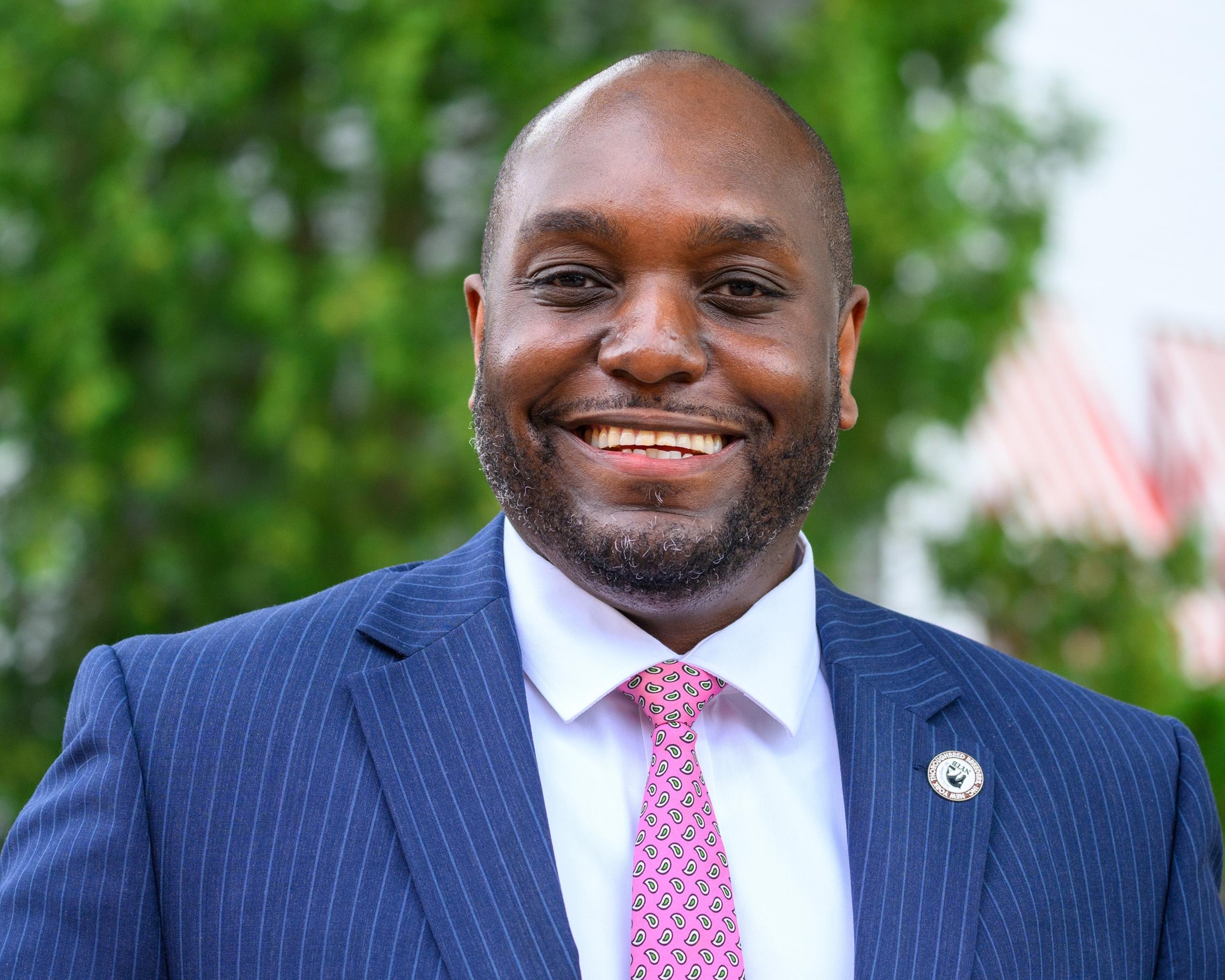
Najja Thompson, executive director, New York Thoroughbred Breeders: Increased awareness and exposure to racing will always be a benefit in helping to grow the sport and widen our demographics. Often, I think we, as an industry, only focus on wanting to attract younger generations, which is important to our long-term sustainability. However, in my opinion, it’s just as important for us to focus on attracting “Gen X” and “baby boomers” who are close to reaching retirement. This segment of society is more likely to have access to disposable income and the free time to cultivate into becoming knowledgeable participants in the sport as gamblers, live race attendees, owners, and breeders. Attracting more fans begins with more engagement. I think what NYRA has been able to do in their partnership with FOX Sports sending their signal nationwide has been extremely beneficial in attracting new eyes and a new audience to our sport. That also extends to our legacy industry partnerships with NBC Sports and broadcasting our premier races and race meets from the Triple Crown to Breeders’ Cup and marquee meets such as Saratoga, Del Mar, Keeneland. Accessibility to racing is always the largest obstacle and racetracks such as Keeneland broadcasting their feed on YouTube and strategic acquisitions, such as the one between FanDuel and TVG, will help to further get racing in front of more people in households and devices which should benefit us in attracting and cultivating more fans moving forward.
Elliott Walden, CEO, president, and racing manager, WinStar Farm: It is not being marketed properly because we have no national marketing plan. I do believe more money should be invested in marketing and I have heard that the NTRA would like to take that on. We have all these alphabet groups and I think it is a good idea to let one of them make marketing their core area of focus. I heard Mike Repole state we should take 10% of our handle (about $1 billion) to try and grow the sport. It is an interesting idea, though a negative is that it would only tax horse owners through smaller purses yet there are so many more groups that would benefit from an overall marketing plan. Mike’s ideas are big ideas, and we need to figure out a way to implement them without getting stuck on the negatives. The great thing about the horse industry is we have successful people from different walks of life, and they merge into one industry. What if we had a committee of five brilliant minds that have marketed their own product in their field, and had them oversee a $100 million campaign a year for five years with the NTRA? Would that move the needle? I believe it would.
Note: TOBA and The Jockey Club (through a subsidiary) are co-owners of BloodHorse.